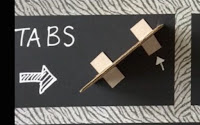Exploring with Watercolor Pencils
 |
| Watercolor Line Work No. 2, Tammy Garcia |
- Without water:Use like a regular colored pencil
- Dry then wet: Color your drawing and then paint over the area with a brush and plain water.
- Wet the pencil tip: Dip the watercolor pencil in a cup of water first then apply to the paper.
- Wet the paper first: Dip your brush in a cup of water and run it over the area you are working on. You can then add color onto the wet surface with your watercolor pencil.


Techniques:



































